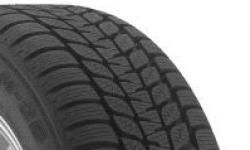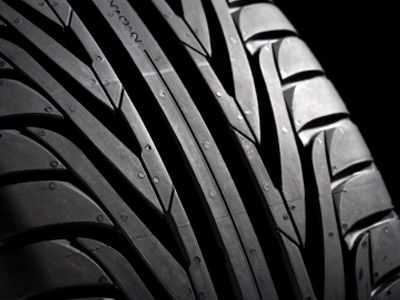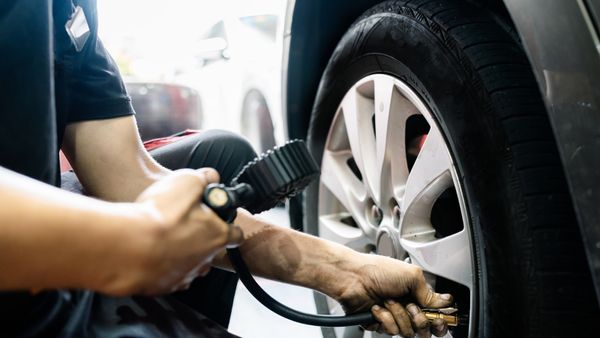A tire that is under inflated shows more wear on the inside of the tread than around the edges. If you keep your tires under inflated, you are causing your car (and tires) a number of problems, as well as creating some safety issues.
First, under-inflated tires reduce your fuel efficiency, so you'll be paying for (and burning off) more gas than your car ought to need. Under inflating your tires can also create excessive heat build-up, which not only increases the rate of wear on your tire, but can cause it to blow out entirely. The U.S. Highway Traffic Safety Administration (NHTSA) has given your tire a temperature rating (A, B or C) as part of its uniform tire-quality grading (UTQG) system, to indicate how much heat your tire can handle. However, the UTQG temperature rating assumes you'll keep your tire at its proper pressure. If you're under inflating your tire, you'll have to assume (and guess exactly how much) your tire's ability to manage heat is now much lower.
Advertisement
The proper inflation level on your tires also affects how much load your car can carry. Every car comes with a tire-load rating that tells you the maximum weight that your tire can bear. However, just as with the UTQG temperature rating, the tire load rating assumes a properly inflated tire (all four of them). An under-inflated tire simply won't be able to carry as much weight.
Your tire's inflation pressure is measured as pounds per square inch, or psi. Your manufacturer's handbook should tell you exactly what the proper psi is for your tires. Buy a simple tire pressure gauge and check your tires' inflation yourself; do this at least once a month. If your tires are below their recommended inflation rate, you can pump air into them at just about any gas station.
Advertisement



